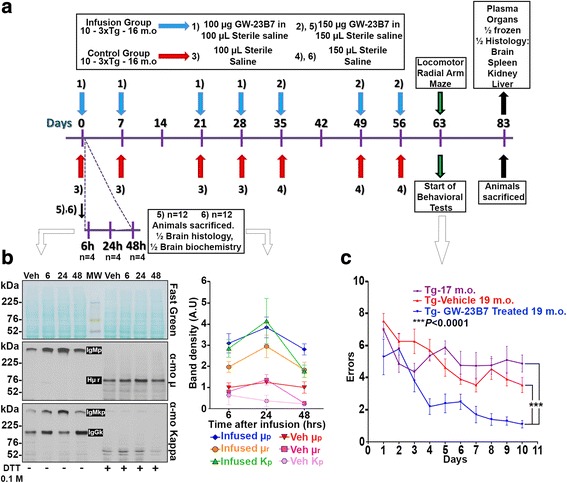Fig. 1.

Protocol of infusion of GW-23B7 or vehicle control into triple-transgenic (3 × Tg) mice and the ensuing behavioral and kinetic tests. a Protocol of the intraperitoneal infusion of GW-23B7 or vehicle alone into 3 × Tg Alzheimer’s disease mice, behavioral tests, and killing of the tested animals. b Comparative kinetics of pentameric immunoglobulin M (IgM) distribution inside brains pooled from 18-month-old 3 × Tg animals infused with either GW-23B7 or vehicle alone as per the bottom part of protocol in (a). Western blots show soluble supernatants from 20% brain homogenates that were stained before and after reduction with reversible Fast Green to assess comparable protein loading (top panel) and detected by antimouse μ heavy chain or antimouse kappa light chain (middle and bottom panels, respectively). The relative concentrations determined by densitometry of the bands are plotted on the graph on the right. c Radial arm maze behavioral test showing significant differences (p < 0.0001 by two-way analysis of variance [ANOVA]) between Tg animals infused with GW-23B7 (n = 10) and both Tg vehicle-treated 19-month-old (n = 10) Tg mice at the baseline age of 16–17 months (n = 9). Dunnett’s multiple comparisons test showed no significant difference between the Tg mice at the baseline age of 16–17 months and the Tg vehicle-treated 19-month-old mice. There was also a significant time learning effect (p < 0.0001 by two-way ANOVA). DTT Dithiothreitol
